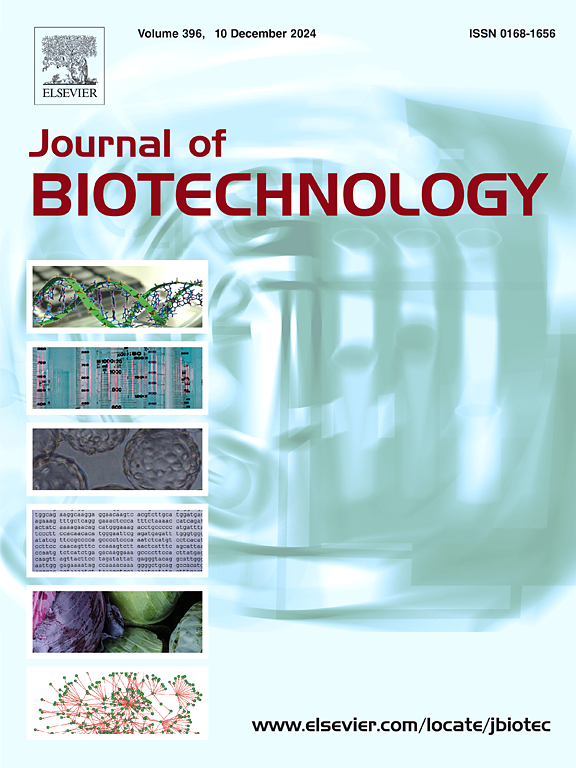Preparation of enzymatic microchannel reactor with immobilized urease-crosslinked enzyme aggregates and its performance
IF 3.9
2区 生物学
Q2 BIOTECHNOLOGY & APPLIED MICROBIOLOGY
引用次数: 0
Abstract
Urine recovery has been achieved through physical-chemical technologies on space station presently, but it requires harsh operation conditions and careful equipment maintenance. Here, a novel microreactor that combined microchannel and urease-crosslinked enzyme aggregates (urease-CLEAs) was prepared to mildly reclaim water and nitrogen nutrient from urine. First, the material that was suitable to make microchannel reactor and immobilize urease-CLEAs was selected from five organic materials, and poly(methyl methacrylate) was the best one. Second, the immobilization conditions for urease-CLEAs were optimized. Microchannel reactor with immobilized urease-CLEAs (CLEAs-microreactor) showed the highest activity of 0.54 U/cm2 under the optimal conditions of precipitant 20 % acetone, crosslinker 2.0 % glutaraldehyde, and 2.0-hour precipitation/crosslinking. CLEAs-microreactor showed good stability of pH, thermal, and storage compared with the microchannel reactor with immobilized free-urease (Free-microreactor). The efficiency of CLEAs-microreactor reached the highest of 101.8 μmol/h, which was 2.24-fold of Free-microreactor. This study provides an alternative technology for the recovery of water and nitrogen nutrient from urine on space station.
固定化脲酶-交联酶聚集体酶微通道反应器的制备及性能研究。
目前,空间站上的尿液回收已通过物理化学技术实现,但需要苛刻的操作条件和精心的设备维护。本文制备了一种新型微反应器,该反应器结合了微通道和脲酶交联酶聚集体(脲酶- cleas),可从尿液中轻度回收水和氮营养物质。首先,从5种有机材料中筛选出了适合制作微通道反应器和固定化脲酶- cleas的材料,聚甲基丙烯酸甲酯为最佳材料。其次,对脲酶- clea的固定化条件进行优化。在沉淀剂为20%丙酮,交联剂为2.0%戊二醛,沉淀/交联时间为2.0 h的条件下,固定化脲酶- cleas微反应器(cleas - micro反应器)的活性最高,为0.54 U/cm2。与固定化游离脲酶微通道反应器(Free-microreactor)相比,cleas微反应器具有良好的pH稳定性、热稳定性和储存稳定性。cleas微反应器效率最高,为101.8 μmol/h,是free微反应器的2.24倍。本研究为空间站从尿液中回收水和氮营养物提供了一种替代技术。
本文章由计算机程序翻译,如有差异,请以英文原文为准。
求助全文
约1分钟内获得全文
求助全文
来源期刊

Journal of biotechnology
工程技术-生物工程与应用微生物
CiteScore
8.90
自引率
2.40%
发文量
190
审稿时长
45 days
期刊介绍:
The Journal of Biotechnology has an open access mirror journal, the Journal of Biotechnology: X, sharing the same aims and scope, editorial team, submission system and rigorous peer review.
The Journal provides a medium for the rapid publication of both full-length articles and short communications on novel and innovative aspects of biotechnology. The Journal will accept papers ranging from genetic or molecular biological positions to those covering biochemical, chemical or bioprocess engineering aspects as well as computer application of new software concepts, provided that in each case the material is directly relevant to biotechnological systems. Papers presenting information of a multidisciplinary nature that would not be suitable for publication in a journal devoted to a single discipline, are particularly welcome.
 求助内容:
求助内容: 应助结果提醒方式:
应助结果提醒方式:


